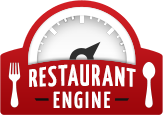Before You Market, Define Your Goals

Your goals must be measurable so you know when you’ve achieved them.
If you don’t know where you’re going, how do you know when you get there?
This statement holds true when it comes to your restaurant marketing. If you don’t have a set of goals, how can you craft a marketing plan?
To assist you, we discuss how before you market, you want to define your goals.
Creating goals and sticking with them not only helps you craft a marketing plan, but it helps you manage your goals and assess them.
The Difference Between Goals and Objectives
First, let’s set the record straight when it comes to goals and objectives for your restaurant.
Objectives are not specific. They are your broad aims. An example might be, “I’d like to increase sales.”
Goals on the other hands are objectives that you attach numbers and deadlines to. An example is, “I want to increase sales by 15% in six months.”
Ultimately as a restaurant owner, your goals need to be SMART. This means they are specific, measurable, achievable, realistic and timely. (tweet this)
If you set your goals in this manner, you can follow your marketing plan while measuring your goals and realizing when you’re successful.
Let’s look at setting SMART goals.
SMART Goals
What is a SMART goal? It is:
- S – Specific
- M – Measurable
- A – Attainable
- R – Relevant
- T – Time-bound and Trackable
A SMART goal helps you realize your objectives sooner and achieve them in a tangible manner. (tweet this) You can set long and short term SMART goals. You can even set one large SMART goal and several smaller ones to back it up.
Your goal should be specific. You’ll find you have more success with a specific goal than a broad one. To set a specific goal, you ask the question why.
For example, why do you want to improve customer loyalty? Once you know the why, which is the big picture, you can begin outlining your goal and then backing it up with marketing strategy.
A measurable goal is one that is visible and concrete. You have a better chance of meeting your goal if your team can “see it.”
Your goals must be tangible and measurable if you expect your staff to be on board.
You also want to ask yourself how you’ll measure your goal. Is it with increased profits, more people downloading your app, or more customers signing up for your loyalty program?
Next, you want an attainable goal. This means that the goal isn’t a pie-in-the-sky goal. It’s one that you and your staff can actually reach.
If you set too lofty of a goal, you’ll find people will get discouraged, and your marketing plan falls flat.
One way around this is to set a big goal and follow it up with smaller goals to help you reach the bigger one.
Your goal must also be realistic. This follows along with attainable. For example, if you want to grow sales 500% in three months, that’s not a realistic goal.
You can set high goals as long as they are realistic.
Finally, your best goals are timely and trackable.
If you set a time frame for your goal, you have an end point set for assessment.
Your goal must also be traceable because that’s the only way you’ll know if it worked.

Goals set your marketing plan on the right track for success.
Possible Restaurant Goals
When it comes to goals, you might like some ideas. Here’s a quick list that gives you a starting point.
#1: Increase Monthly Net Restaurant Sales By X Amount
This is most likely the most important goal for your restaurant because it’s obviously the one that keeps you moving forward.
Before you define your marketing plan, you need to know what your sales are currently, where you want to take them, and the time frame to make it happen.
#2: Increase Daily Net Restaurant Sales By X Amount
This is an example of a short term goal. It might be tied to a holiday or weekend promotion.
Here you want to use your short term goal to create a time sensitive marketing strategy.
#3: Improve Customer Satisfaction
With this as a goal, you might consider a loyalty program as one way to gauge your customer satisfaction.
Your marketing plan would include tactics to either create or improve your customer satisfaction.
In addition, you might train your staff how to provide the best service and start rewarding employees who get it right.
#4: Improve Your Social Media Reach
This is goal you can work on. For example, your goal may be to increase your Instagram followers by 100 people in six months.
Once you know the goal, you create your marketing strategy to reach it.
#5: Grow Restaurant Traffic
Some restaurants want to bring more diners inside. Whether it’s breakfast, lunch or dinner, you might set a goal of bringing in 50 more customers this month.
Once you’ve got the goal, you can focus on using email, website, social platforms and other strategies to bring in new customers.
You can always promote this with specials, gift cards or discounts for referrals.
#6: Enhance Customer Service
When you combine great food and exceptional service, you have a winning combination.
When it comes to customer service, there’s always room for improvement, so this may be an ongoing goal.
Your strategy might include having more greeters at the door, more training for your staff, or free bread on the table.
Final Thoughts
According to one source, marketers who set goals are 429% more likely to report success than those who don’t. And, marketers who document strategy are 538% more likely to report success than those who don’t.
So, before you market, define your goals.
While marketing is vital to your success, it can’t happen unless you’ve set your SMART goals.
As you work on your marketing, use your goals to make your strategy.
Consider a staff meeting to work on your goals together.
This helps keep your team interested and engaged. It helps your restaurant reach its fullest potential.
Do set challenging goals. Don’t make them too easy or too difficult.
Regroup on a consistent basis to evaluate your goals as well as your marketing strategy.
At Restaurant Engine, not only do we create great, responsive websites, but you can count on us to create a website that drives business to all your restaurants and edges you above the competition by using mobile-friendly design with a terrific user experience. Ready to take the plunge and create a website with an online menu, blog and beautiful photos? Get your free website consultation today!
Image: Jay Wennington and Kelsey Chance on Unsplash


Leave a Reply